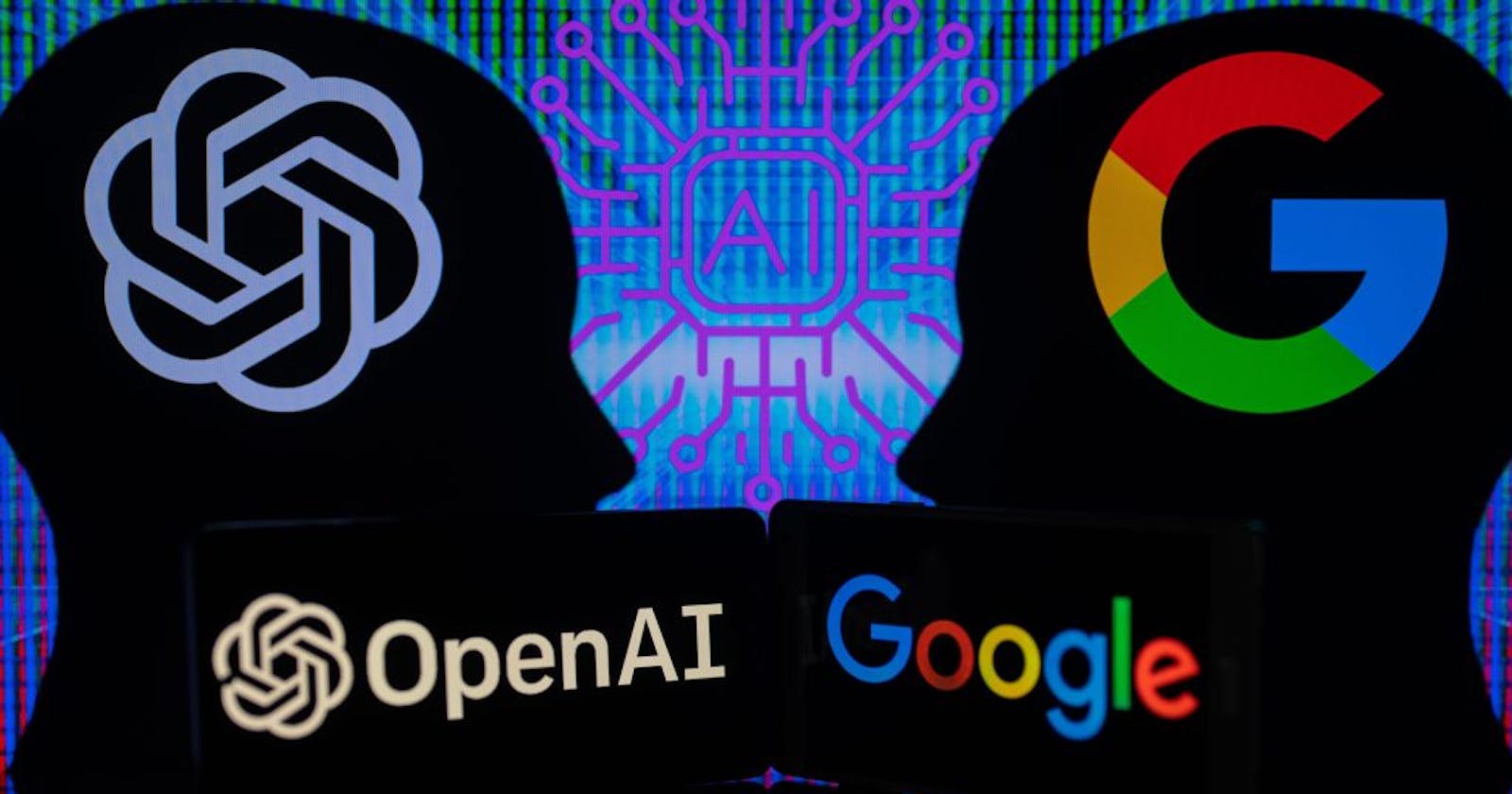In recent years, there has been a surge of interest in artificial intelligence (AI) chatbots. These chatbots are powered by large language models (LLMs), which are trained on massive datasets of text and code. As a result, they can generate human-like text in response to a wide range of prompts and questions.
Google has rolled out its generative AI chatbot 'Bard' for the general public in over 180 countries, Now we have access to two of the most popular AI chatbots with the existing OpenAI's ChatGPT (We will be mentioning about ChatGPT 3 because GPT 4.0 is not widely available to the public) Both chatbots are powered by powerful LLMs and have a wide range of capabilities. However, there are also some key differences between the two chatbots.
If you are still wondering what are these chatbots and how are they gaining so much traction among tech enthusiasts, here is a simple analogy:
Imagine a person who has read every book ever written and has also written every piece of code ever created. This person would have an encyclopedic knowledge of the human language and would be able to generate human-like text in response to a wide range of prompts and questions. Bard AI is like this person, but it is not a person. It is a computer program that has been trained on a massive dataset of text and code.
Bard AI
Google has used several technologies to create Bard AI. One of the most important technologies is called a large language model (LLM). An LLM is a type of artificial intelligence (AI) that is trained on a massive dataset of text and code. This dataset can include books, articles, code, and other forms of human language. As a result, LLMs can generate human-like text in response to a wide range of prompts and questions.
Another important technology that Google has used to create Bard AI is called a neural network. A neural network is a type of AI that is inspired by the human brain. Neural networks can learn and adapt over time, becoming more accurate and informative as they are exposed to more data.

Google has also used several other technologies to create Bard AI, including machine learning, natural language processing, and deep learning. These technologies have all played a role in making Bard AI a powerful tool.
ChatGPT
ChatGPT is a chatbot that uses a large-scale neural network model called GPT-3 to generate natural and engaging responses. GPT-3 is a generative pre-trained transformer model that can learn from a massive amount of text data and produce coherent texts on various topics and domains.

One of the main challenges of building a chatbot is to make it understand the context and intent of the user, as well as to maintain a consistent and relevant conversation. ChatGPT leverages the power of GPT-3 to achieve this by using a few techniques:
Context encoding: ChatGPT encodes the previous messages of the user and the chatbot into a vector representation that captures the semantic and emotional information of the dialogue. This vector is then fed as an input to GPT-3, along with the current user message, to generate a response that is coherent and consistent with the context.
Persona embedding: ChatGPT also allows the user to choose a persona for the chatbot, such as friendly, humorous, professional, etc. This persona is embedded into another vector that is also fed as an input to GPT-3, along with the context vector and the user message, to generate a response that matches the desired tone and style of the chatbot.
Response filtering: ChatGPT uses a response filtering module that evaluates the quality and appropriateness of the generated responses from GPT-3. This module uses various criteria, such as fluency, relevance, diversity, safety, etc., to rank and select the best response for each user message. This module also ensures that ChatGPT does not generate any harmful or offensive content.
By using these techniques, ChatGPT can create a chatbot that can converse with users on various topics and domains, while being natural, engaging, and respectful. ChatGPT is one of the first chatbots that uses GPT-3 as its core engine, and it demonstrates the potential and innovation of using large-scale neural network models for natural language generation and understanding.
Conclusion
Google Bard and OpenAI ChatGPT are two of the most powerful AI chatbots on the market. Both chatbots have a wide range of capabilities and have the potential to be used for a variety of tasks. However, it is important to be aware of the limitations of AI chatbots and to address the concerns that people have about them. By doing so, we can ensure that AI chatbots are used for good and their sole reason should be to maximise productivity by providing support and ease of access.
Do mention in the comments if you found this informative and also do share your thoughts on this.Thanks:)
